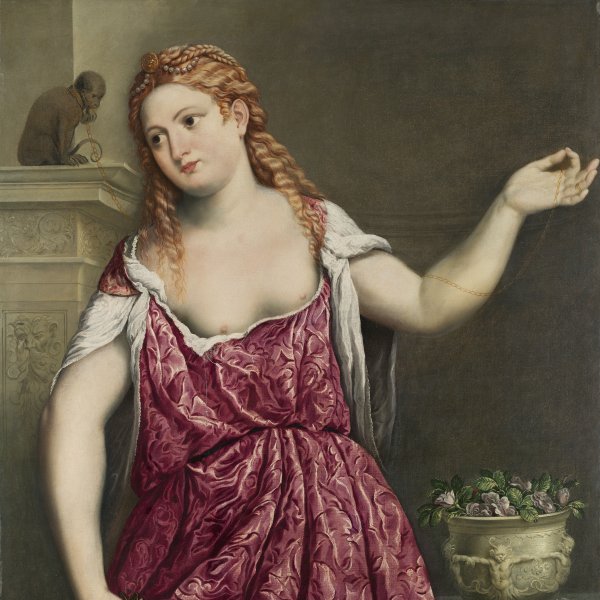Paris Bordone
Treviso, 1500-Venice, 1571
Paris Bordone was born in Treviso in 1500 but moved to Venice as a child. He trained in that city with Titian, remaining in his workshop until around 1516. By the early age of 18 he was already established as an independent master. According to Vasari, Bordone’s premature departure from Titian’s workshop accounts for the strained relations between the two artists, to the point where Titian managed to appropriate Bordone’s first commission for the altarpiece of the church of San Niccolò dei Frari in Venice. From the outset Bordone’s work reveals not only the marked influence of Titian but also that of Giorgione and later of Pordenone.
Bordone achieved public recognition in 1534 when he won the competition for the Scuola di San Marco to depict The Presentation of the Ring to the Doge of Venice. Now in the Accademia in Venice, this is considered the artist’s most important painting. Over the following years and probably until 1538 he was away from Venice. According to Vasari Bordone travelled to the court of François I in Fontainebleau where he was extremely active. While there he made contact with Luca Penni, Francesco Primaticcio and Rosso Fiorentino, who were also working for the French monarch. Following this experience Bordone’s art combined the Venetian approach with elements from central Italian and French Mannerist painting. Over the following decades he made another important trip, this time to Bavaria, where he worked for the Fugger in Augsburg and for other influential families. Neither the date of this trip nor the chronology of the works that Bordone produced there have been established. From 1560 onwards the artist is documented in his studio in Venice where the majority of the commissions that he received were from Treviso.





